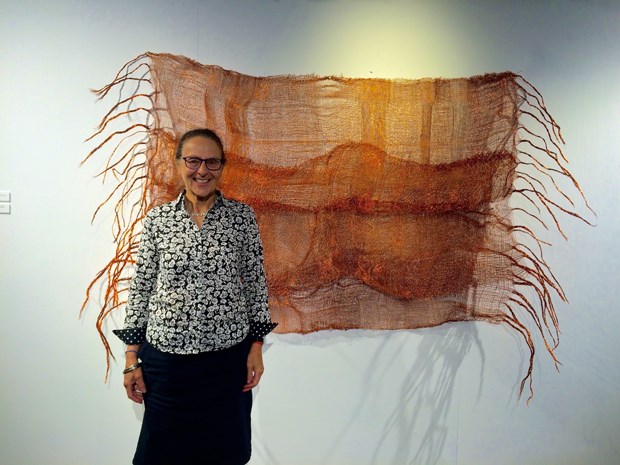|
An exhibit at the Gulf of Georgia Cannery this summer is showcasing the past, present and future of the B.C. coastline and how oil pipelines are impacting First Nations fishing grounds. |
The Trading Routes: Grease Trails, Oil Futures exhibition displays benefits and social and environmental risks associated with rapid changes due to oil industry advances. It looks, in an interactive manner, at the impacts on B.C.’s salmon-bearing rivers; the Fraser, Skeena, Nass, and Stikine.
Adding a little unique touch to the exhibition, nine non-Aboriginal and Aboriginal artists created artworks ranging from sculptures and photos to videos, audio and a digital interactive map. These aim to evoke a more “sensory way of thinking,” said Ruth Beer, one of the artists.
The display attempts to illustrate change as it’s experienced by different individuals. It shows not just the environmental, but also social, political and economic impact.
Beer said these factors are important to study because the change that has occurred over the past 100 years has been significant and effects every aspect of our lives.
“We hope to make a difference through raising awareness,“ said Beer, clearly passionate about the issue, adding, her aim was to get, “…visitors to reflect on some of the issues.”
The event was made possible thanks to a federal government grant, said Beer, who is a professor at Emily Carr University.
The cannery’s public programs manager and curator, Karen Lee, said she did a lot of research for the exhibition and created the interactive map along with text panels.
Lee and Beer connected the exhibition to the cannery in an attempt to expand the audience and outreach of the artists’ work.
Beer said what is particularly interesting about the exhibition is that visitors can see through the “lens of artistic practice and hear the voice of artists and other cultural producers.”
One of the artworks is a unique sculpture which is open to interpretation. Beer said the structure resembles a meteoroid due to its black and shiny texture, but it could also represent an oil spill. Viewers are encouraged to use their imagination to alter its meaning, she added.
Trading Routes: Grease Trails, Oil Futures is open daily from 10 a.m. to 5 p.m. at the Gulf of Georgia Cannery, located at 12138 Fourth Avenue.



